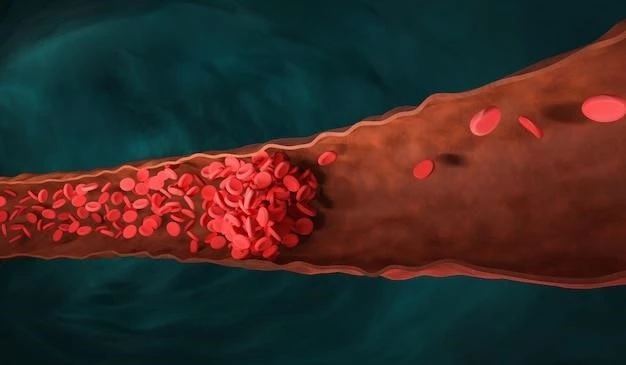Introduction
WT Limb Blood Syndrome‚ a rare condition characterized by hematological and musculoskeletal anomalies‚ poses challenges in prognosis and management.
Overview of WT Limb Blood Syndrome
WT Limb Blood Syndrome is a rare condition characterized by hematological anomalies like Fanconi anemia‚ leukemia‚ and lymphoma‚ often manifesting in childhood. It also presents anomalies in limbs and hands such as hypoplastic thumbs‚ syndactyly‚ and radial defects. The syndrome is autosomal dominant and poses risks of developing leukemia.
Symptoms
WT limb blood syndrome presents with hematological anomalies like Fanconi anemia‚ leukemia‚ and lymphoma‚ along with limb and hand abnormalities such as hypoplastic thumbs and radial defects.
Haematological Anomalies
WT Limb Blood Syndrome is characterized by hematological anomalies like Fanconi anemia‚ leukemia‚ and lymphoma. These conditions often present in childhood and require careful monitoring and treatment to manage effectively.
Limbs and Hands Anomalies
WT Limb Blood Syndrome is associated with limb and hand anomalies such as hypoplastic thumbs‚ radial defects‚ and syndactyly. These musculoskeletal abnormalities can significantly impact the quality of life and require specialized care.
Diagnosis
WT limb blood syndrome is diagnosed based on clinical manifestations‚ genetic mutations (autosomal dominant)‚ and specialized tests to detect hematological anomalies and musculoskeletal abnormalities.
Genetic Mutations
WT Limb Blood Syndrome is caused by genetic mutations‚ manifesting as autosomal dominant transmission. These mutations can lead to a range of hematological and musculoskeletal anomalies‚ contributing to the complexity of the syndrome.
Prognosis
Prognosis of WT Limb Blood Syndrome involves assessing the likely outcome‚ duration‚ and potential complications of the syndrome. This information informs the management and care plans for individuals affected by the condition.
Likely Outcome and Duration
Prognosis for WT Limb Blood Syndrome involves assessing the potential outcomes‚ recovery prospects‚ survival rates‚ and risk of complications. The duration of the syndrome and its impact on individual health conditions are critical factors considered in managing the condition effectively.
Chances of Complications
WT Limb Blood Syndrome carries a risk of complications such as leukemia‚ lymphoma‚ and severe anemia. The potential for these complications necessitates close monitoring and timely intervention to mitigate adverse outcomes.
Treatment
Management approaches for WT limb blood syndrome involve a combination of targeted therapies‚ supportive care‚ and regular monitoring to address hematological and musculoskeletal anomalies effectively.
Management Approaches
Management strategies for WT Limb Blood Syndrome focus on a multidisciplinary approach‚ including targeted treatments for hematological anomalies and surgical interventions for musculoskeletal abnormalities. Regular follow-up and monitoring are crucial to track progress and address any emerging issues effectively.
Supportive Care
Supportive care is an essential component in the management of WT limb blood syndrome‚ focusing on addressing the physical‚ emotional‚ and social needs of individuals affected by the syndrome. It includes psychosocial support‚ access to community resources‚ and coordination with healthcare providers to enhance the overall well-being of patients.
Research
Ongoing studies and findings related to WT limb blood syndrome contribute valuable insights into the genetic mutations‚ prognosis‚ complications‚ and management strategies for this rare condition.
Ongoing Studies and Findings
Current research on WT Limb Blood Syndrome focuses on exploring genetic mutations‚ novel treatment strategies‚ and identifying potential biomarkers for early detection. Studies aim to improve the understanding of the syndrome’s pathophysiology and enhance patient outcomes through targeted interventions and personalized medicine approaches.
Specialists in the Field
Experts specializing in WT limb-blood syndrome have conducted research‚ received grants‚ published articles‚ and participated in organizations dedicated to understanding and treating the disease‚ offering valuable insights into its management and care.
Inheritance
WT Limb Blood Syndrome follows an autosomal dominant transmission pattern‚ impacting both males and females equally.
Autosomal Dominant Transmission
WT Limb Blood Syndrome is inherited in an autosomal dominant manner‚ meaning one altered copy of the gene in each cell is sufficient to cause the disorder. Individuals with this type of inheritance have a 50% chance of passing the genetic mutation to their children. This mode of transmission affects both males and females equally.
Historical Perspective
WT Limb Blood Syndrome‚ named after the families with surnames starting with W and T‚ showcases distinctive features that have been identified and studied throughout history‚ contributing to a deeper understanding of this condition.
Origin of the Syndrome Name
WT Limb Blood Syndrome derived its name from the families with surnames starting with W and T‚ where multiple members displayed characteristic features of the disease. This nomenclature signifies the historical significance and familial associations linked to the syndrome.

Support Groups
Support groups for WT Limb Blood Syndrome offer valuable resources‚ community connections‚ and assistance for affected individuals and their families.
Community and Advocacy Organizations
Community and advocacy organizations play a crucial role in supporting individuals and families affected by WT Limb Blood Syndrome‚ offering education‚ resources‚ and a network of support to navigate the challenges associated with the condition.
Financial Resources
Access information about disability benefits for WT Limb Blood Syndrome through relevant organizations and government agencies.
Disability Benefits Information
Individuals with WT Limb Blood Syndrome may be eligible for disability benefits. Organizations like the Social Security Administration provide information and support regarding financial resources and assistance programs available to help individuals manage the challenges associated with the syndrome.
Clinical Features
WT Limb Blood Syndrome exhibits hematological anomalies like Fanconi anemia‚ leukemia‚ and lymphoma‚ along with limbs and hands abnormalities.
Description of Clinical Manifestations
WT Limb Blood Syndrome presents with hematological anomalies like Fanconi anemia‚ leukemia‚ and lymphoma‚ often in childhood. Limbs and hands may exhibit abnormalities such as hypoplastic thumbs‚ syndactyly‚ and radial defects. The syndrome is described within specific families‚ and its inheritance follows an autosomal dominant pattern.
Rare Disease Classification
WT Limb Blood Syndrome is classified as a rare aplastic anemia disorder associated with skeletal anomalies and an increased risk of leukemia.
Aplastic Anemia Disorder
WT Limb Blood Syndrome is classified as a rare aplastic anemia disorder characterized by severe hypo/aplastic anemia or pancytopenia associated with skeletal anomalies like radial/ulnar defects and hand/digit abnormalities. This condition also carries an increased risk of leukemia and requires specialized medical management.
Individuals with WT limb blood syndrome face an increased risk of developing leukemia‚ necessitating close monitoring and specialized care.

Associated Risks
Individuals with WT limb blood syndrome face an increased risk of developing leukemia‚ necessitating close monitoring and specialized care.
Patient Resources
Explore informational tools and support networks available for individuals diagnosed with WT limb blood syndrome.
Informational Tools and Support
Access various informational tools and support networks designed to assist individuals and families affected by WT Limb Blood Syndrome‚ providing valuable resources‚ guidance‚ and a sense of community to navigate the challenges associated with the condition.
Conclusion
In conclusion‚ WT Limb Blood Syndrome poses challenges with its hematological and musculoskeletal anomalies‚ requiring specialized care and ongoing support for affected individuals and their families.
Summary of WT Limb Blood Syndrome
WT Limb Blood Syndrome is a rare condition characterized by hematological anomalies like Fanconi anemia‚ leukemia‚ and lymphoma‚ often manifesting in childhood. It presents limb and hand abnormalities such as hypoplastic thumbs‚ radial defects‚ and syndactyly. The syndrome follows autosomal dominant inheritance and carries an increased risk of developing leukemia. Treatment involves specialized care to manage both hematological and musculoskeletal issues effectively;
